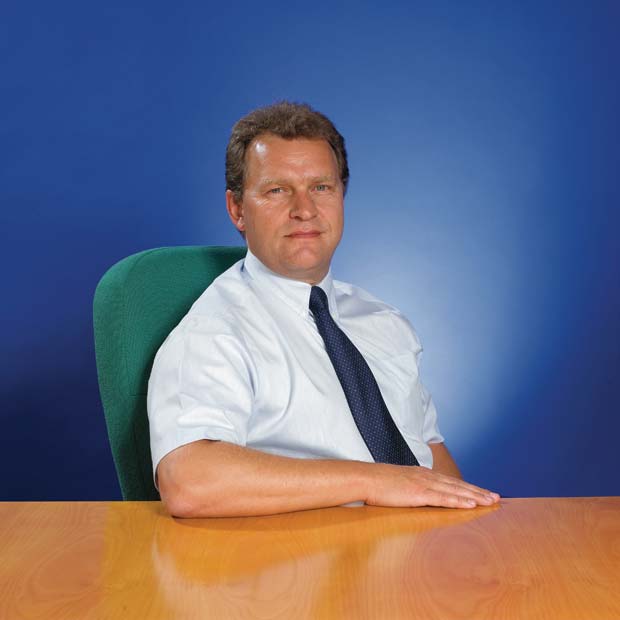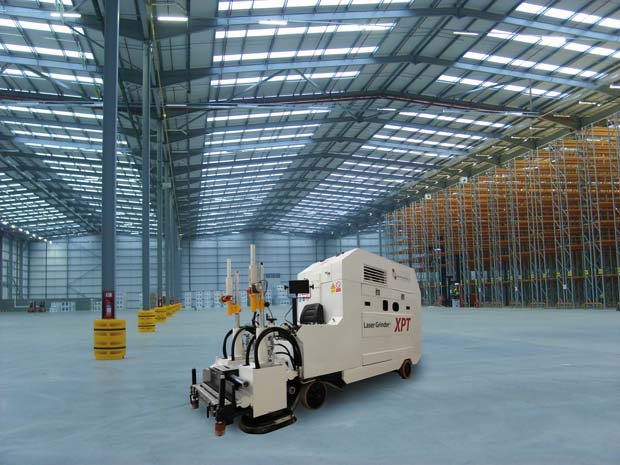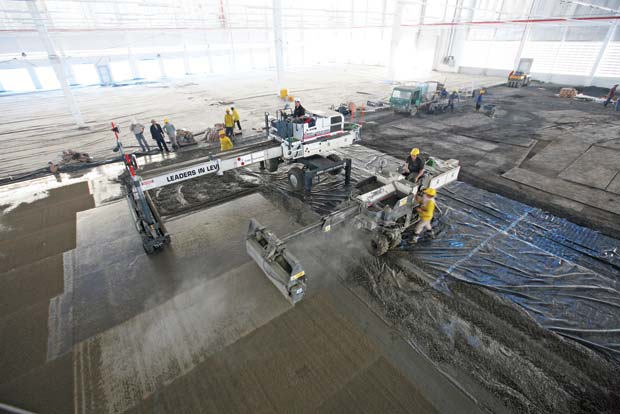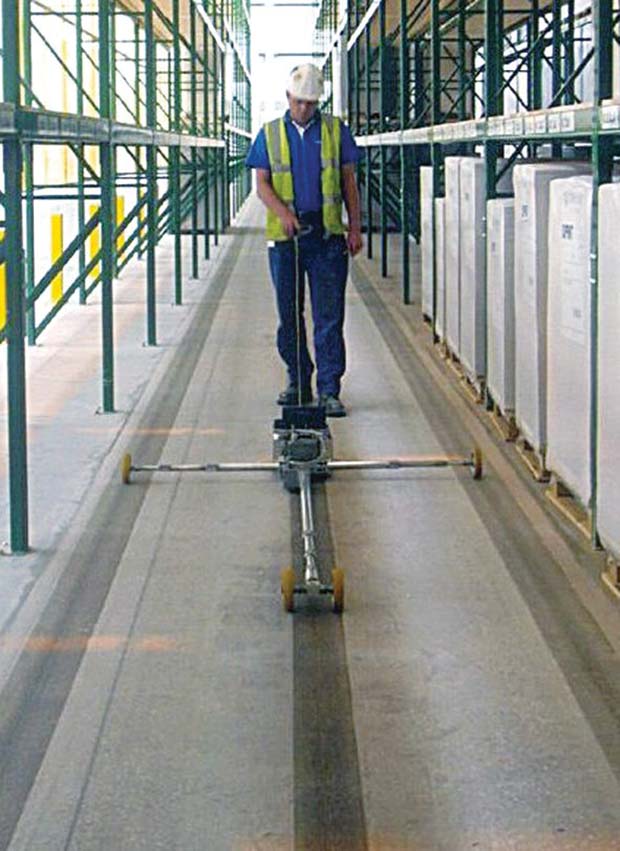Established in 1989, and recognised as world leaders and experts in the field of high tolerance and superflat flooring technology, the CoGri Group is a consortium of international industrial floor solution specialists, taking in subsidiary companies Face Consultants Ltd, Concrete Grinding Ltd and CG Flooring Systems Ltd.

From small beginnings, CoGri Group is now a global brand, with regional companies and overseas partnerships, offering its clients world class expertise in floor consultancy, contracting, construction, upgrades and repairs of warehouse, commercial and industrial floors, delivering a complete package solution if required.
Kevin Dare, founder and Managing Director of the CoGri Group of companies, and Chairman of the Association of Concrete Industrial Flooring Contractors (ACIFC) spoke to Warehouse & Logistics News.
Warehouse & Logistics News – First of all, Kevin, can you run through the different companies and services within the CoGri Group, and how they work together?
CoGri Group are a group of multi-disciplinary industrial flooring specialists offering everything from design, consultancy, repair and in certain parts of the world full floor construction, primarily servicing the warehouse and logistics industry.
WLN – What is your role in the business day to day? Do you get directly involved in providing floor solutions for customers? Who else are the senior managers in the business?
I have a great team of people around me who are specialists in their own right, with many years of experience. On a day to day basis I manage business development, especially overseas, set the group companies’ standard operating procedures and budgets and keep a close eye on finance. Apart from running the business I give many seminars on floors and get involved in the technical issues of projects that are a little different. I am always there to support my team here in the UK or overseas if needed, technically or commercially.
WLN – What does your role as Chairman of the ACIFC involve? How much of your time does it take up?
Being Chairman of the ACIFC is an honour, especially as I was one of its founder members and been on the board of governors since inception. The ACIFC brings together the concrete industrial flooring contractors to speak with one voice and has a huge influence in steering the standards by which the industry works and also a voice in parliament. It is a role that takes up a few hours a week on average.
 WLN – Whereabouts are you based in the UK? How many staff do you have here?
WLN – Whereabouts are you based in the UK? How many staff do you have here?
We have two offices in the UK with the HQ in Huddersfield and an office in Newbury. The UK group employs around 50 people. Overseas the Group employs in excess of 100 people.
WLN – What kinds of clients do you work for here in the UK? Do you publish customer case studies?
Our clients include anyone that owns, develops, builds or operates warehouses and distribution centres. The list includes some of UK industry’s biggest names. We publish customer case studies on our websites.
WLN – I understand CoGri Group is now an international consortium, with offices worldwide. Can you tell us about the various member companies? How do you work together?
Our overseas operations are slightly different region to region. In Europe we work with partners offering the same services we do in the UK. In Australia we have offices in Sydney, again offering the same services as the UK. In the Middle East and South Africa we sell our standard services but also design and build concrete floors for the logistics industry. CoGri Asia is a Group in its own right. Managed by the Singapore HQ we have offices in Malaysia, Thailand, China and Korea, making us the largest specialist flooring contractor in the region, offering all the services we do in the UK but also design and build floor construction.
WLN – If a UK-based company wants you to carry out work for one of its overseas subsidiaries, who should they contact?
We have worked on every continent, and will work in most countries. All a client needs to do is contact one of our regional offices, or the UK HQ if unsure and we will look after their needs. If we cannot help, we will know someone who can.

WLN – How do you sum up the CoGri Group proposition these days?
Very simple – professional, personable and price perfect.
WLN – What different grinding services do you offer?
We offer three levels of grinding service for VNA warehouses. First is the cheap and cheerful manual grinding service, which will get your floor just within contractual limits and nothing else. Next is our standard Laser Grinder® service, leaving the floor well within a given flatness specification and suitable for almost all VNA applications. The third one is our latest service using the Laser Grinder® XPT, giving the ultimate in ultraflat floor grinding for clients that want maximum performance from their MHE.
WLN – What does your floor consultancy service cover? Do you test third parties’ concrete floors for flatness?
Face Consultants are the only UKAS accredited floor flatness testing service in the world, and offer independent professional testing services to the flooring and materials handling industry. Face not only test flatness but abrasion, slip and structural integrity. They also have a design section carrying out a full design service on floors with a difference to most structural engineers, that being we understand what the client needs and how the construction industry can deliver it.
WLN – Can you talk about the different kinds of concrete floor repairs you carry out?
Our repair companies, CG Flooring Systems and Concrete Grinding, cover most repairs needed for floors from joint repairs, screeds, coatings and grinding. CG Flooring Systems have now got their own professional grade products that they sell direct or use as part of our repair service.
 WLN – How often should people examine their concrete floors to make sure they are in good order?
WLN – How often should people examine their concrete floors to make sure they are in good order?
Floors are a component of the building that is used by the tenant aggressively every minute of the day, and like the equipment that runs on it, the floor does need maintenance. It is good practice to inspect your floor on an annual basis, and this is a service we currently offer to some of our more discerning clients.
WLN – In which areas of industry is floor flatness most important?
Undoubtedly the most important category of industry where flatness is essential is within aisles of high density warehouses where VNA trucks operate on a defined path.
WLN – Why is correct floor flatness so important?
Operations are more efficient if lift trucks operate at maximum speed. Poor surface regularity will cause excessive vibration on a lift truck, increase down time and maintenance. Floor flatness also affects Health & Safety, driver fatigue, reduces damage to stock, and gives control on the general quality of a floor when constructed.
WLN – What is the industry standard for floor flatness?
The Concrete Society Technical Report TR34 published in 1988 was a pioneering step and contains the principal standards used to determine floor flatness in warehouses. As the demand for faster, more efficient warehouse technology increases and truck developments continue, floor flatness standards help to contribute to warehouse operators’ peace of mind. There are different types of flatness specification for Free Movement and Defined Movement floors such as those for VNA trucks.
![]() WLN – What does the term ‘superflat’ actually mean?
WLN – What does the term ‘superflat’ actually mean?
‘Superflat’ has, over the years become a generic term for a degree of floor flatness required to operate a Very Narrow Aisle (VNA) truck where in fact ‘Superflat’ is an actual category of flatness defined in the Concrete Societies Technical Report 34 (TR34). There are varying degrees of flatness requirement and all relate to the height of the racking system that the VNA truck is to service. Superflat, as defined by TR34, is specified where the top beam of the racking exceeds 13m. In the same table there are two other degrees of flatness; Category 1 for rack heights between 8 and 13 metres and Category 2 for racking heights less than 8 metres. TR34’s Appendix C also introduces a surface regularity specification that is soon to be the basis of a European specification and is similar to the American Fmin requirement. In Germany DIN 15185 is specified and as the majority of VNA trucks are manufactured in Germany, the DIN standard is occasionally specified. We offer a comparison chart for the various standards on our website.
WLN – Do standards for floor flatness carry around the world?
Flatness measurement standards have only been developed to any degree of sophistication in the US, UK and Germany. There is considerable commonality between the US and UK standards which are to be found in use throughout the world. This is unsurprising as Face Consultants is the common link, and it is no coincidence that the designation F is found in the US standard. The German standard is unlikely to be encountered outside Germany and some other parts of Europe. The decision on which specification to choose is usually dependant on the country of origin and there are three main floor flatness specifications used internationally.
WLN – Are you involved in developing these standards?
Yes, we have been heavily involved in setting the TR34 standards and the European standard.
 WLN – Do concrete floors need to be built differently according to the specification you are working to?
WLN – Do concrete floors need to be built differently according to the specification you are working to?
Yes, they do. We design and build depending on how the floor will be used.
WLN – What is involved in constructing a Super-Flat floor?
Constructing ‘Superflat’ floors starts with a proposed racking layout. Without that, the floor cannot be designed or constructed to be ‘Superflat’, as it will only be ‘Superflat within the aisles and in the direction the VNA forklift truck will travel. ‘Superflat’ floors are not ‘Superflat’ in all directions. After designing the floor, we will advise the contractor on the specialist equipment required to construct the floor, discuss necessary manpower and detailed method statements. Concrete mix designs will also be considered where discussions with the concrete supplier on mix and consistency are paramount. Our highly experienced team will provide on site instruction to the contractor, teach the skills and techniques essential to achieving a high degree of floor flatness. Using the Face Digital Profileograph, building progress can be tested and techniques fine tuned where discrepancies are highlighted.
WLN – You mention advising the contractor. Do you do any actual superflat floor construction yourselves?
Yes, but not in Europe. We have been involved in and instrumental in the introduction of designing and constructing superflat floors in certain parts of Europe, the Middle East, Far East and South Africa.
WLN – You’ve also invented the Laser Grinder®. Can you tell us about what this is, and what it does?
The Laser Grinder® enables aisles on new and existing floors to be upgraded to the flatness required to operate VNA trucks safely and at their optimum efficiency. It is a very clean, quick and effective way of achieving the desired level of floor flatness while offering little or no disruption to the ongoing warehouse activities.
 WLN – How does laser grinding compare with manual floor grinding, using trolley mounted or hand held grinding machines?
WLN – How does laser grinding compare with manual floor grinding, using trolley mounted or hand held grinding machines?
Using trolley mounted and hand held grinding machines, manual floor grinding is the most basic method of correcting floor flatness where maximum narrow aisle truck performance is not required. If a lot of grinding is needed to bring the floor in to the required specification, it can be a slow and laborious process. In contrast, Laser Grinding is a quick, clean, highly efficient process and extremely accurate. Laser Grinding is the ideal solution where a high standard of floor flatness is required for the safe and efficient operation of narrow aisle trucks.
WLN – How many Laser Grinding machines do you have around the world?
We have now built 15 Laser Grinders®, operating globally, and based at our main offices in the UK, mainland Europe, Singapore, Korea, Middle East and Australia. We continue to develop the Laser Grinder®, and each time an improvement is made, the Laser Grinders® are upgraded when they return to head office for maintenance and servicing. We have also introduced the new Laser Grinder® XPT, with lower emissions, reduced sound levels, faster grinding and the introduction of the curve computer calculates how the Laser Grinder® XPT is going to grind the floor to the required flatness specification whilst also minimising the depth of concrete that is removed. The XPT will eventually replace the standard Laser Grinders in our fleet.
WLN – You mentioned the Face Digital Profileograph earlier. What other digital floor surveying instruments have you developed over the years?
We design and build all our own floor surveying equipment, including the Face all in one Profileograph, which can measure all current defined movement specifications. We have also developed the DIN metre for measuring the German DIN standard for Free Movement floors, the Prop II metre for measuring TR34 free Movement floors and the F Speed Reader to check compliance with the American flatness standards.

WLN – You’ve also developed the CoGri Joint Stabiliser. What is that? How does it work?
The CoGri Joint Stabiliser is a unique patented joint stabiliser system. The most efficient load transfer repair system available, it offers a fast, cost effective method for eliminating rocking slabs.
![]() WLN – Who do people need to speak to at CoGri in the first instance, if they’re concerned about their warehouse floor?
WLN – Who do people need to speak to at CoGri in the first instance, if they’re concerned about their warehouse floor?
Just call the office, give a brief description of the issues and reception will put you through to the best technical person they think can handle your problem.
WLN – What will you be showing on your stand at IMHX? Will you be showing any new products or equipment?
We will have our testing equipment and some of our specialist repair products. However the most important thing we will have on our stand is our companies’ main asset, that being our people.
WLN – How important are shows like IMHX to your company and its strategy?
Very important! It gives us an opportunity to talk to visitors and exhibitors in a single location. Some of the exhibitors are also our clients or potential clients.
 WLN – The big question: why should a busy professional from the logistics industry take a day out of the office to visit your stand?
WLN – The big question: why should a busy professional from the logistics industry take a day out of the office to visit your stand?
We have all disciplines within our group covered in one location, including some of our overseas managers.
WLN – Looking at the wider picture, what do you see as the biggest pressures on warehouse managers in terms of flooring and floor maintenance?
A floor is the tabletop on which a warehouse operation runs. A poor floor surface results in poor performance and higher maintenance costs.
WLN – Finally, where do you see the UK flooring market and CoGri Group going from here?
CoGri is undergoing a growth spurt overseas. Europe is steady but reasonably static for the flooring industry. Our next focus area is South America.
Tel: 01484 600080
email: info@cogrigroup.com




Comments are closed.